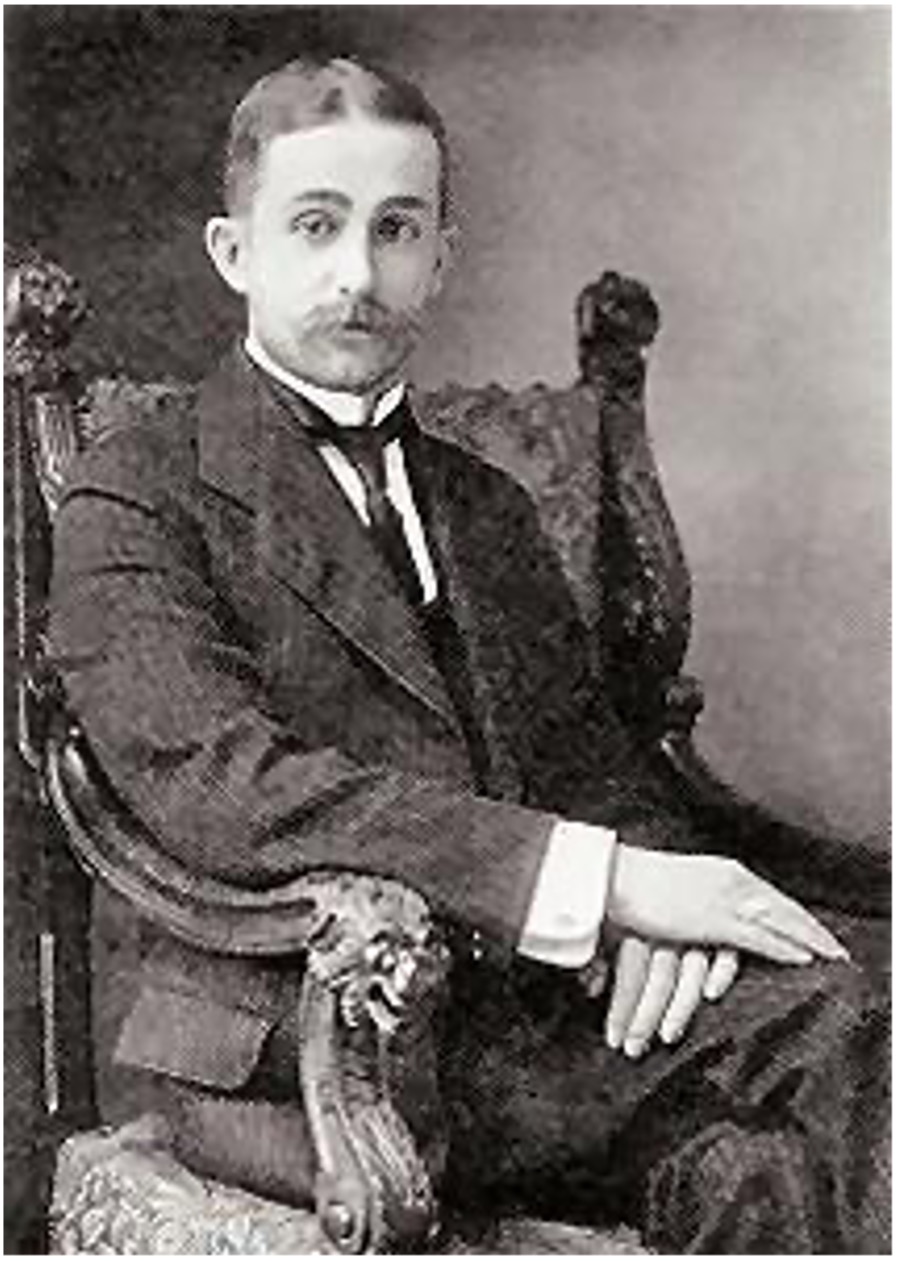
We normally avoid sharing a platform such as this when introducing a stellar philatelist. However, in the case of this philatelic jewel Fabergé there isn’t much we can do about it, because you often see the provenance ‘Ex Fabergé’, and if you aren’t aware that may refer to the world famous philatelist Agathon Karlovich Fabergé (1876 to 1951), who was born in Russia, and probably better known as the son of the famous jeweler Peter Karl Gustavovich Fabergé – creator of Fabergé eggs. It may also refer to Oleg A. Fabergé (1923 to 1993) the son of Agathon, and who became a recognised philatelist in his own right. But, the egg comes before the son in this piece, so let’s start with Agathon, who was also a professional jeweler, collected art, and worked at the famous house of Fabergé from 1892 until in the 1920’s his family had to flee Russia for Finland due to the threat of revolution. In fact, Agathon, for reasons of loyalty, stayed in Russia and faced the music when his family fled, and was imprisoned for his stance. In 1927 he was smuggled out of prison and then out of Russia to the safety of Finland, where he took with him his beloved stamp collection and some of his fine art and antique furniture. Much of these valuables sustained him in funds during the remainder of his life in Finland.
In philatelic terms he is one of the most famous Russian philatelists, although he ended his days in Finland. And as already stated he also gave life to another world class philatelist in the shape of his son Oleg Fabergé, the pair whom the Russian Academy of Philately created an award in their memory called The Fabergé Medal, it has the image of both of them engraved upon it, and is given to collectors and outstanding figures in politics, science and culture who carry out public charitable activities in the promotion, strengthening and development of Russian philately. Oleg also produced a book called ‘Imperial Russia Zemstvo Post’, published by the Philatelic Federation of Finland ironically, which contains reproductions in colour of the magnificent Oleg Fabergé collection and exhibit of Zemstvos, and it is no doubt a passion for these stamps that Oleg inherited from his father as well as some of the material also, because Agathon had a fascination with Zemstvos – for example it is stamp folklore that Agathon is famous for his pursuit of Ferrary’s Zemstvos.
We’ve already answered that age old puzzle of which came first, the chicken or the egg, because in philately the egg came first. Agathon joined the St. Petersburg section of the International Philatelic Society of Dresden where he met many well-known collectors and acquired important pieces for his collection. Agathon was actively involved with major philatelic exhibitions in: Helsinki, Berlin, Vienna, Paris, and Brussels in the late 1920s through to the 1940s, some of which he exhibited at or served as a judge. Although recorded as a famous Russian Philatelist, he is known to have had the largest collection of Finnish postage stamps in the world, as well as extensive Russian and Polish material. He assembled a unique collection of philatelic material of the Russian Empire. The Fabergé collection was presented at an out-of-competition show during the International Philatelic Exhibition in Vienna in 1933. This collection caused a ‘furor’ (this is the word used to describe the reaction and so is used here for reasons of authenticity) in the world philately, it was a show stopper by all accounts, and ensures that although Fabergé is synonymous with a bejeweled Egg, Agathon is synonymous with Russian and Finnish philately, and as a result of his passion his son Oleg also left a philatelic legacy. In 1939, Agathon Fabergé sold the majority of his stamp collection at auction in London. Now whilst we have introduced two top flight philatelists, we shall crown only one a Philatelic Emperor who is worthy of his place in our philatelic hall of fame, and that’s Agathon K. Fabergé.
